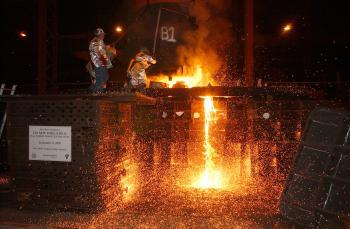The “greenest” cities in the U.S.— rated by containing the most energy efficient buildings—have been announced by the Environmental Protection Agency (EPA).
The EPA released a list March 23 of cities that have the largest number of buildings earning the EPA Energy Star in 2009.
Los Angeles remains in first place for the second year in a row, with 293 energy star labeled buildings. The District of Columbia comes in second, followed by Denver and Chicago respectively. New York City ranked among the top ten for the first time.
“Communities from Los Angeles to Louisville are reducing greenhouse gases and cutting energy bills with buildings that have earned EPA’s Energy Star,” Gina McCarthy, assistant administrator for EPA’s Office of Air and Radiation, said in a statement.
The energy star rating is awarded to commercial buildings such as schools, hospitals, office buildings, and retail stores who perform within the top 25 percent of similar buildings nationwide.
Commercial building energy accounts for 17 percent of U.S. greenhouse gas emissions costing over $100 billion per year.
Recent research has also shown that a significant amount of people prefer to work or do business with environmentally sound organizations, according to the EPA statement.
EPA’s quest to work with businesses and organizations in reducing their greenhouse gas emissions began over a decade ago, but 2009 was the first year to see a compiled list of top-performing energy efficient cities.
EPA grades on a scale of 1 to 100 and nearly 3,900 commercial buildings earned the Energy Star in 2009 with annual savings of more than $900 million in utility bills and more than 4.7 million metric tons of carbon dioxide emissions.
Year-end building utility savings have grown to nearly $1.6 billion and greenhouse gas emissions equal to the emissions of more than 1 million homes a year were prevented. The estimated savings from Los Angeles and New York alone added up to more than $180 million.
Residential buildings throughout America have stepped into the green zone, too, with 9,000 buildings earning the Energy Star rating since the first building was awarded in 1999.


